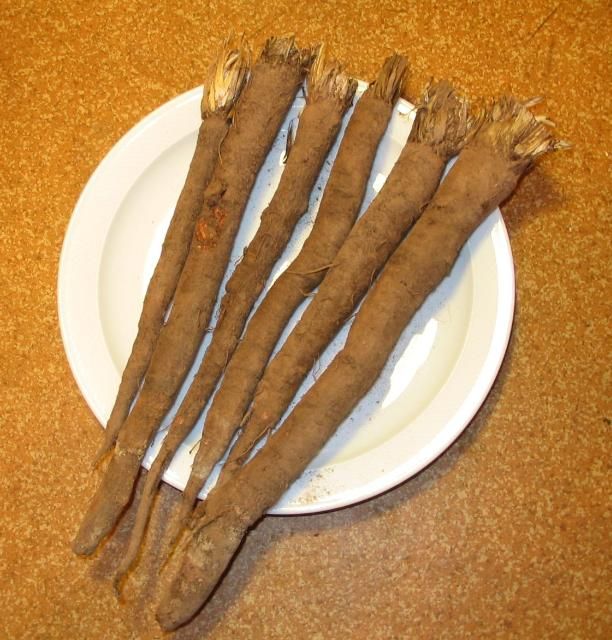Scorzonera—Scorzonera hispanica L.1
Scorzonera is also called black salsify, black vegetable-oyster plant, serpent root, and viper's grass. It has a long fleshy taproot similar to that of salsify, but is black in color, with white flesh.
While scorzonera is not popular in the United States, it has been grown for many years throughout Europe where it is a native of Spain. The name derives from the Spanish escorza negra, meaning black bark. The reference to snakes in its common names serpent root and viper's grass comes from the Old French word scorzon, meaning snake.

Credit: Rasbak, CC BY-SA 3.0

Credit: Andreas Job, CC BY-SA 3.0
Description
The scorzonera plant reaches 2 feet in height, with entire leaves similar to but wider than ordinary grass. If left to grow for the second year, it bears dandelion-like yellow flowers on stems 2–3 feet high. Seeds are white, smooth, very long, blunt at one end, and somewhat pointed at the other.
Culture
Scorzonera is a perennial, but is grown as an annual with culture suggested about the same as for parsnips, carrots, and regular salsify. Scorzonera has been rated "fair" in specimen garden trials at Gainesville.
Start the plants by sowing seeds ½-inch deep in the fall, winter, or early spring. Space plants 2–4 inches apart in the row, and if more than one row is desired, space rows 18–24 inches apart. Seeds usually germinate well for at least 2 years if properly stored.
This cool season vegetable requires an optimum monthly average temperature of 55°F–75°F with a monthly maximum average of 85°F and a monthly minimum average of 45°F.
Use
The roots reach edible size about 6 months after seeding. However, if left in the soil longer, even through the second year, they are reported to keep their culinary quality.
Boiling the roots is necessary to remove a bitter taste, after which they may be eaten in a similar manner and with the same oyster-like taste as salsify. Roots are used in soups and mashed, while the leaves are occasionally eaten in salads.


